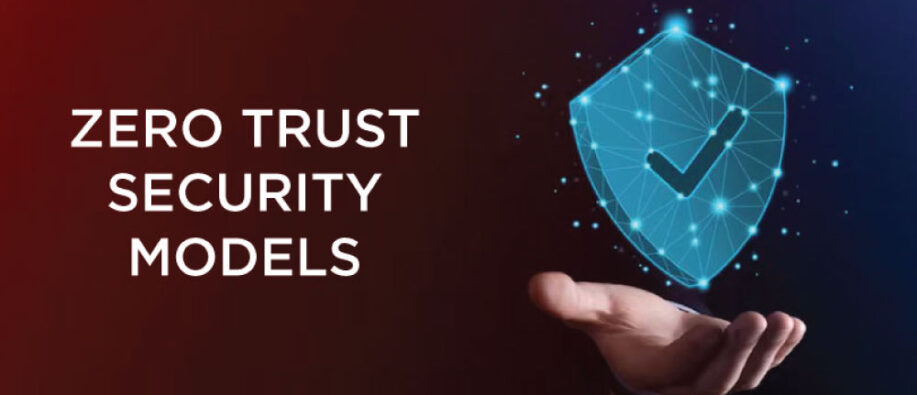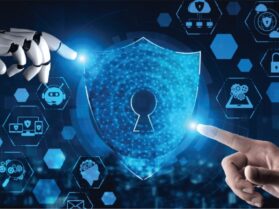Zero trust- Yes! It is exactly as the name suggests – zero implicit trust! It is based on a philosophy of not allowing a device or a person, inside or outside the network of an organization, to have access to connect to IT systems unless it is absolutely essential to do so.
Current threats in cyberspace have evolved into more advanced and widespread dangers. Trusted security models that build their defenses along network borders have demonstrated their inadequacy to protect data and systems in modern environments. Organizations embrace Zero Trust security models at this point. Organizations must establish an active approach which treats all networks within and beyond their system as inherently untrustworthy.
What Is a Zero Trust Security Model?
According to Zero Trust security principles all access requests need permanent verification regardless of trust. In contrast with traditional security models which allow entry through network position Zero Trust imposes ongoing verification procedures for all users and devices. Utilized since John Kindervag introduced it in 2010 this security model reduces data breach risks through both access control protocols and narrowed vulnerability pathways. That implements Zero Trust security methods gives businesses substantial improvements in cybersecurity strength.
How Does Zero Trust Work?
Every request for system access requires ongoing verification of legitimacy under the Zero Trust security model. It relies on:
IMG
- Identity and Access Management (IAM): Ensures users and devices authenticate before accessing resources.
- Multi-Factor Authentication (MFA): Users need to demonstrate their identity through multiple security methods, which consist of passwords and body-based elements.
- Least Privilege Access (LPA): Grants users the minimum permissions necessary for their tasks.
- Micro-Segmentation: Divides networks into smaller zones to limit lateral movement of threats.
- Continuous Monitoring: Uses AI-driven analytics to detect and respond to suspicious activities in real time.
Multifaceted Tenets Define Zero Trust Security
Implementing Zero Trust security models requires adhering to specific core principles:
1. Verify in a clear manner
All access requests go through exact verification using live operational data that consists of user authentication along with device health and application authorization parameters.
2. Enforce Least Privilege Access
Functionality requirements determine what permission levels devices and users will obtain to perform assigned operations. Safe systems result from this implementation strategy because it blocks attackers from breaking through defenses.
3. Assume a security breach
Every organization should automatically consider both external and internal threats as part of their security planning. The organization becomes better able to stop data loss by actively identifying breaches and anomalies.
4. Segment the Network
Safeguarded sensitive assets within micro-segmentation stop attackers from moving between remote parts of the network during a breach.
5. Use Adaptive Authentication
Zero Trust employs continuous risk evaluation of user activity and network integrity which causes corresponding security controls to adapt automatically.
What's the need for Zero Trust Security Model?
1. Growing Cybersecurity Threats
Advanced cyber-attacks consisting of ransomware and phishing and insider threats allow criminals to circumvent traditional security frameworks. Zero Trust security models defend organizations against potential risks through their method of continuous monitoring features and strict access control enforcement mechanisms.
2. Rise of Remote Work
Flexible workforces using diverse devices throughout various locations have rendered traditional network boundaries unnecessary. Zero Trust security grants remote work access only after successful user and device authentication.
3. Protection Against Insider Threats
Most cyber threats do not result from external attackers. Cyber threats emerge from internal sources including staff members who act maliciously or fall to external exploitation. Under Zero Trust security approaches role-based access controls alongside continuous verification help organizations combat insider threat vulnerabilities.
4. Compliance with Regulatory Standards
Various sectors like healthcare and finance and government have to satisfy their data protection obligations through official regulations. Zero Trust allows organizations to achieve compliance with GDPR, HIPAA and CCPA through its robust security enforcement principles.
5. Cloud and Hybrid Environments
The movement of businesses towards cloud-based applications along with hybrid infrastructure systems makes traditional security models lose their effectiveness. With Zero Trust implementation users obtain protected access to cloud resources alongside the prevention of unpermitted entries.
6. Minimizing Attack Surfaces
Hackers enter networks by targeting vulnerable security programs. The application of Zero Trust principles enables businesses to control access entry points which lowers their exposure to cyber threats.
The Future of Zero Trust Security Models
The upcoming years will see Zero Trust security models expanding further because businesses understand the need for superior cybersecurity approaches. Future developments will likely include:
- AI-Driven Threat Detection: Security threat detection and prevention is enabled by artificial intelligence systems which work in real time scenarios.
- Automated Incident Response: Zero Trust will integrate automated security responses to contain and neutralize cyber threats more efficiently.
- Stronger IoT Security: With the rise of Internet of Things (IoT) devices, Zero Trust will extend its principles to secure connected devices.
- Enhanced Identity Management: Biometric authentication and blockchain-based identity verification will become standard in Zero Trust frameworks.
- Zero Trust-as-a-Service (ZTaaS): Managed service providers will offer Zero Trust solutions as a service, making implementation easier for businesses of all sizes.
Zero Trust Security Model: In Conclusion
Modern organizations need different security models because growing cyber threats exceed traditional security capacity. Systems alongside sensitive data become secure under Zero Trust security models since they maintain continual verification and enforce access restriction. Zero Trust implementations prepare businesses to fight evolving cyber threats while defending their remote staff and maintaining regulatory compliance. The implementation of Zero Trust security stands as the digital imperative for protecting our future security.
Recommended For You:
What is Zero Trust Architecture and How Does It Enhance Cybersecurity?





